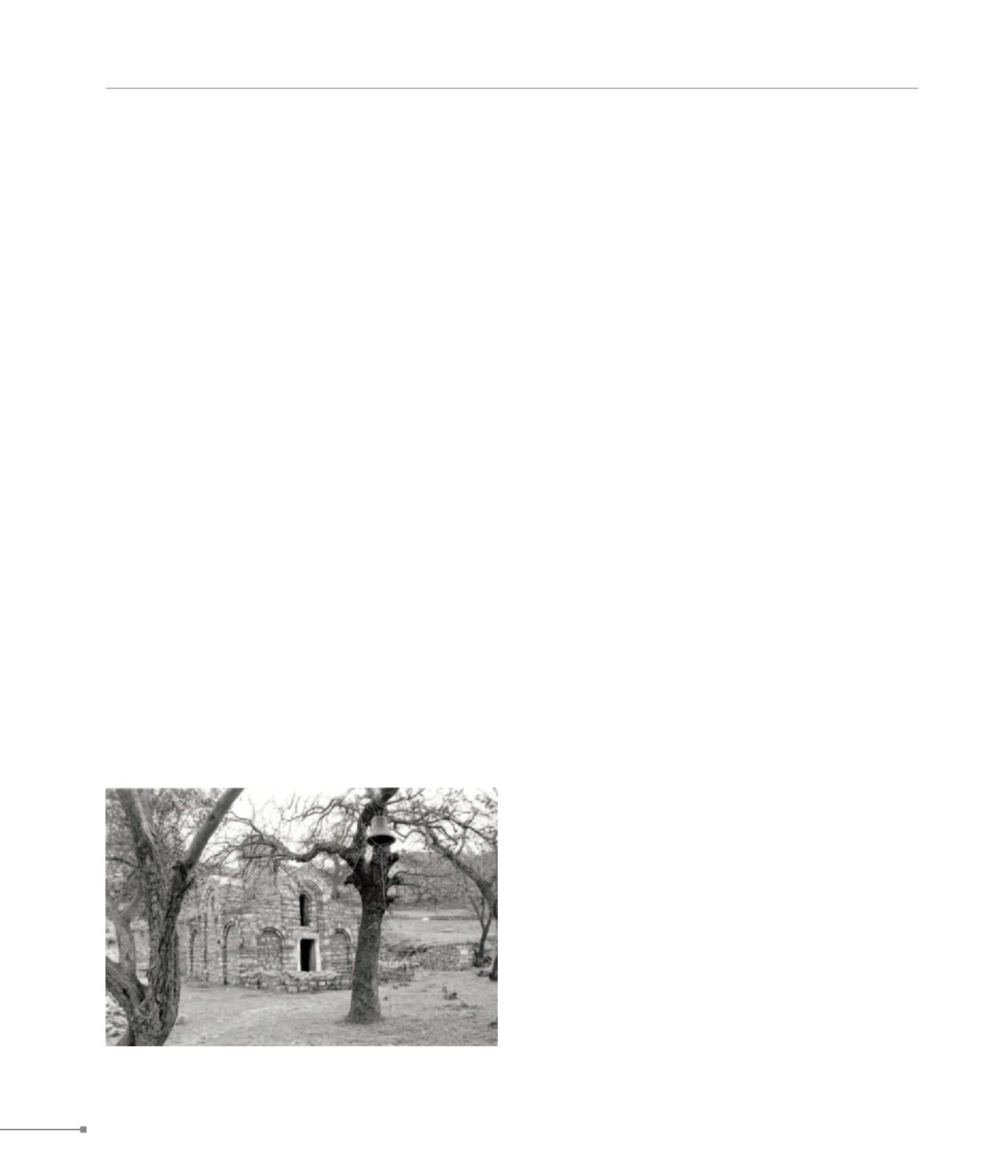
Kounavoi.
Tholoi.
CRETE
276
459. Roukani, Saint John Chrysostom (Ρουκάνι, Άγιος Ιωάννης
Χρυσόστομος)
456.
Kounavoi.
The large Mid-Byzantine church of Saint Nicholas and Aghios
Demetrios is the only example in Crete of a five-domed, cross-
in-square place of worship.
457.
Katalagari.
The Kastelos fortress was built on a hill close to the villages
Katalagari and Kallone, controlling visually most of Pediada,
up to Mount Dikti. It is a rectangular structure with weakly forti-
fied walls on three sides (except N). On his plan, G. Gerola
marks a significant number of buildings within the walls. In a
greater area carved wine-presses dating to the period before
the Venetian occupation have been discovered. Along with the
fortresses of Lyktos, Kasteli Pediadas and Meleses, Kastelos
controls the fertile region of Pediada. It original construction
probably dates from the second Byzantine period.
458.
Prophitis Elias
.
The older name of the village of Prophitis Elias was Kanli
Castelli (meaning Bloodstained Fortress). On the two-peaked
Rocca hill, S of Prophitis Elias, is the fortress of Temenos, built
on an area of about 50 ha. It was constructed by Nikepho-
ros Phokas after the liberation of Crete in 961. According to
information from Leon the Deacon, the fortress would serve
as a secure place inland so that the city of Chandax could be
transferred there. However, the inhabitants of Chandax were
opposed to this transfer and returned to their ruined city to
reconstruct it. The Temenos fortress was used as the seat of
a Castellany during the Venetian occupation and was ceded
to the Querini family. It occupies the steep slopes of Rocca hill
and its design follows the shape of the ground. There are bul-
warks at various points. The towers are mainly semicircular,
one is triangular and another is polygonal. The citadel is sur-
rounded by a double wall and ends at the top of the hill in the
form of an autonomous fort. Within the walls are four church-
es, and there are buildings in the citadel and elsewhere. Nine
cisterns and a complex arrangement collect water from local
springs.
459.
Roukani.
The granting of the monastery of Saint John Chrysostom
“a Rucano” to the Sinai monastery is mentioned in a docu-
ment of Doge Pietro Ziani dated 1212. The monastery also
appeared in a contract as property of the Latin Patriarchate
of Constantinople and is included in the legacy of Cardinal
Bessarion. From this monastery survives the cross-in-square
catholicon of the 11th c., S of the present-day village. The
dome is a reconstruction of the 18th c. and the ruined church
has been extensively restored. The external surfaces feature
blind arcades. In the S section, where an aisleless chapel has
been added, the original plaster can be found, with carvings
imitating isodomic masonry.
460.
Meleses.
The fortress of Kastelos at Meleses was built on a hill with two
peaks, and is invisible from a distance. It is of ellipsoidal shape
and extends on two levels. On the plan by G. Gerola there
are numerous buildings, especially in the E side. The fortress
seems to have been constructed in the second Byzantine pe-
riod. It controls the road to Pediada and has visual contact
with Lyktos and the fortress of Katalagari.
461.
Tholoi.
Tholoi is a fortified site on the top of a hill, near the village of
Alagni Pediadas. It consists of a rectangular fortification wall
and a robust two-storey building with a vaulted ground floor. It
has visual contact with the fortress of Kastelos at Meleses and
oversees the road between Pediada and Monophatsi. Origi-
nally, probably in the second Byzantine period, it is possible
that there was a vigla at the site of the building. All other fea-
tures date to the Εarly Venetian occupation.


